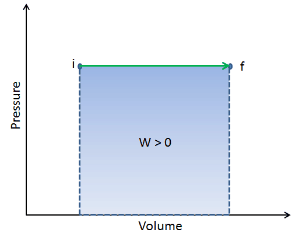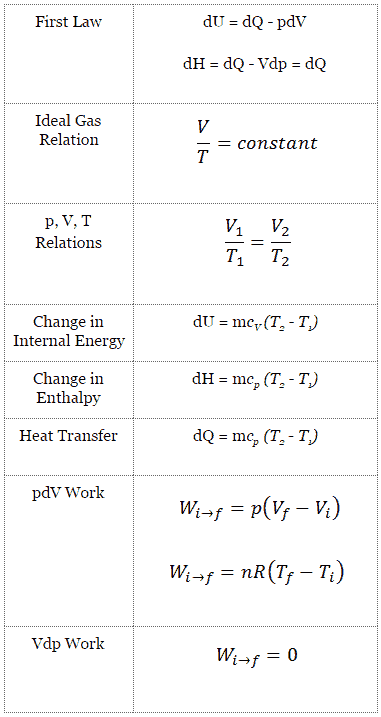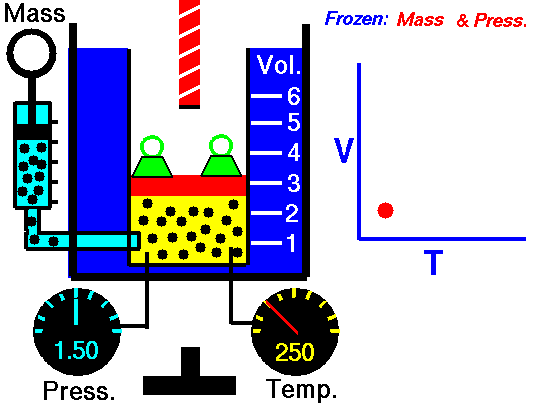Isobaric Process – Ideal Gas Equation
See also: What is an Ideal Gas

Let assume an isobaric heat addition in an ideal gas. In an ideal gas, molecules have no volume and do not interact. According to the ideal gas law, pressure varies linearly with temperature and quantity, and inversely with volume.
pV = nRT
where:
- p is the absolute pressure of the gas
- n is the amount of substance
- T is the absolute temperature
- V is the volume
- R is the ideal, or universal, gas constant, equal to the product of the Boltzmann constant and the Avogadro constant,
In this equation the symbol R is a constant called the universal gas constant that has the same value for all gases—namely, R = 8.31 J/mol K.
The isobaric process can be expressed with the ideal gas law as:
or
On a p-V diagram, the process occurs along a horizontal line (called an isobar) that has the equation p = constant.
Pressure-volume work by the closed system is defined as:
Assuming that the quantity of ideal gas remains constant and applying the ideal gas law, this becomes
According to the ideal gas model, the internal energy can be calculated by:
∆U = m cv ∆T
where the property cv (J/mol K) is referred to as specific heat (or heat capacity) at a constant volume because under certain special conditions (constant volume) it relates the temperature change of a system to the amount of energy added by heat transfer.
Adding these equations together, we obtain the equation for heat:
Q = m cv ∆T + m R ∆T = m (cv +R)∆T = m cp ∆T
where the property cp (J/mol K) is referred to as specific heat (or heat capacity) at a constant pressure.
See also: Specific Heat at Constant Volume and Constant Pressure
See also: Mayer’s formula
Charles’s Law
Charles’s Law is one of the gas laws. At the end of the 18th century, a French inventor and scientist Jacques Alexandre César Charles studied the relationship between the volume and the temperature of a gas at constant pressure. The results of certain experiments with gases at relatively low pressure led Jacques Alexandre César Charles to formulate a well-known law. It states that:
For a fixed mass of gas at constant pressure, the volume is directly proportional to the Kelvin temperature.
That means that, for example, if you double the temperature, you will double the volume. If you halve the temperature, you will halve the volume.
You can express this mathematically as:
V = constant . T
Yes, it seems to be identical as isobaric process of ideal gas. These results are fully consistent with ideal gas law, which determinates, that the constant is equal to nR/p. If you rearrange the pV = nRT equation by dividing both sides by p, you will obtain:
V = nR/p . T
where nR/p is constant and:
- p is the absolute pressure of the gas
- n is the amount of substance
- T is the absolute temperature
- V is the volume
- R is the ideal, or universal, gas constant, equal to the product of the Boltzmann constant and the Avogadro constant,
In this equation the symbol R is a constant called the universal gas constant that has the same value for all gases—namely, R = 8.31 J/mol K.
We hope, this article, Isobaric Process – Ideal Gas Equation, helps you. If so, give us a like in the sidebar. Main purpose of this website is to help the public to learn some interesting and important information about thermal engineering.





